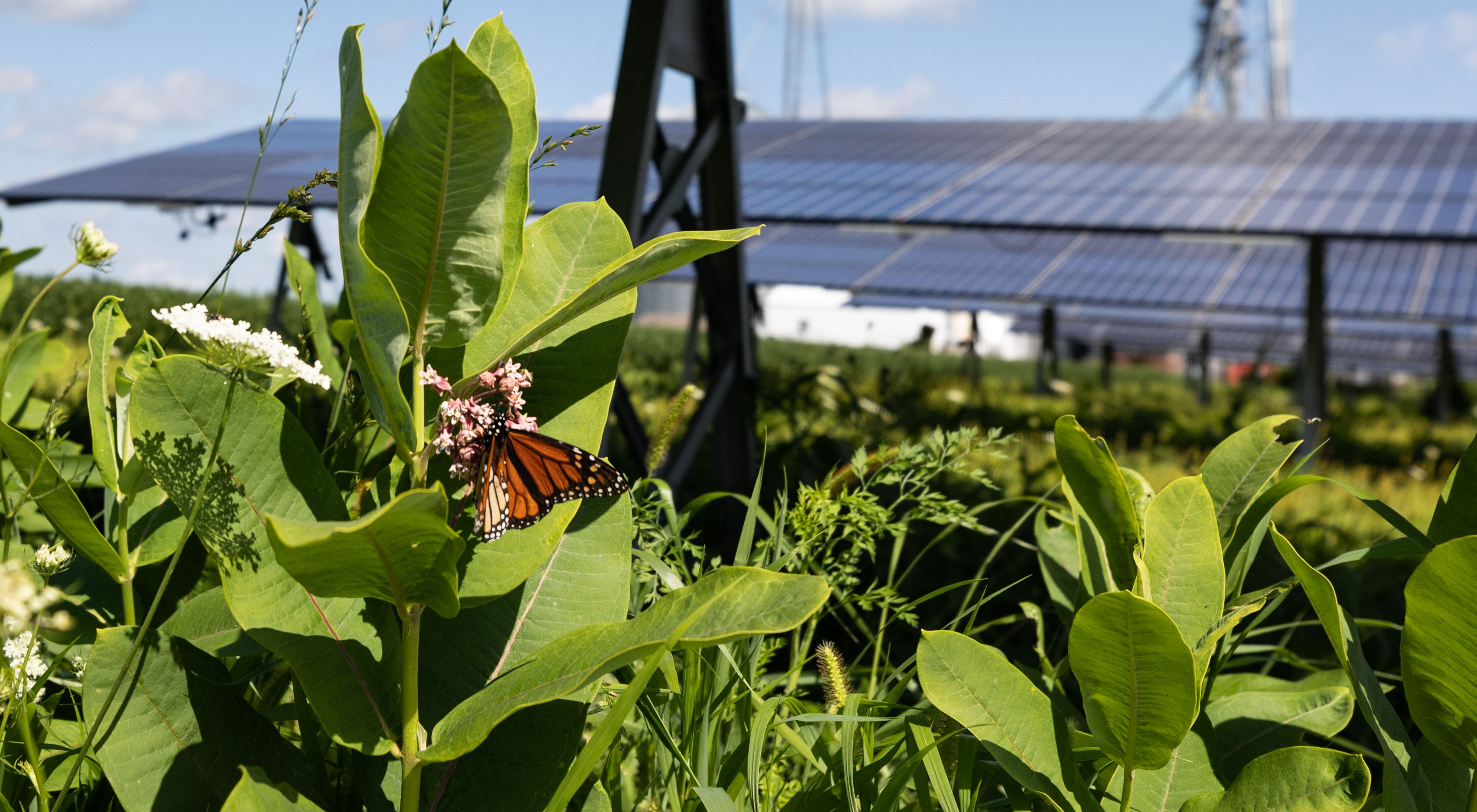The Nature Conservancy and Pollinator Partnership Release Guide on Smart Siting, Pollinator-Friendly Solar
Media Contacts
-
Isabel Morales
The Nature Conservancy Illinois
Email: isabel.morales@tnc.org -
Danielle Cinquepalmi
Phone: (630) 863-5659
Email: Dcinquepalmi@pcipr.com
As Illinois makes the pivotal transition to 100% clean energy, The Nature Conservancy (TNC) in Illinois is encouraging the use of best practices to ensure that new renewable energy is sited and managed to maximize benefits for climate, nature and people.
Smart renewable energy siting and pollinator-friendly solar installations are two important pieces to the puzzle of a greener, clean energy transition. Smart siting prioritizes renewable development on low-impact sites such as rooftops, parking lots, closed mines and landfills or marginal farmland, and is a critical way to avoid development on natural areas or prime farmland. Pollinator-friendly solar combines solar arrays with native prairie plantings designed to support pollinators and beautify solar sites.
To provide guidance on these two important areas of work, TNC and Pollinator Partnership (P2) have created a guide, Greening the Clean Energy Transition: Smart Siting and Pollinator-Friendly Solar Energy in Illinois. Since project lifetimes are expected to average between 20 to 30 years, the considerations outlined in this guide provide timely guidance to shape decisions made today regarding where renewables are placed on the landscape and how sites are managed.
In 2021, Illinois passed The Climate and Equitable Jobs Act (CEJA), which seeks to move Illinois to entirely carbon-free power by 2050. The act paves the way for the state to fight climate change by promoting clean, affordable energy. As CEJA incentivizes a rapid buildout of renewables across the Prairie State, thoughtful siting practices and the widespread uptake of pollinator-friendly plantings on solar sites can maximize benefits for biodiversity, agriculture, and local communities.
“It’s important to take advantage of win-win opportunities to cut carbon pollution and protect nature,” TNC Illinois’ Climate and Energy Program Manager, Karen Petersen, said. “Installing solar panels is an effective way to tackle climate change, and smart siting coupled with planting prairie in and around the panels will help our native plants and animals thrive.”
The new guide outlines smart siting principles that can be used in conjunction with TNC’s Site Renewable Right Interactive map — a 100-layer-deep database that identifies where renewable energy can be developed without major impacts on wildlife. After a low-impact site has been identified, the guide also covers how developers can incorporate pollinator-friendly plants in and around solar panels to maximize the environmental benefits of a solar site. Co-locating pollinator vegetation within solar installations provides a wide array of benefits, helping native plant and animal species thrive, including pollinators like the monarch butterfly and the endangered rusty-patched bumble bee. Planting native plants in and around solar arrays also increases soil and water quality, supports agricultural production, captures carbon, reduces long-term management costs, and improves aesthetics.
“Combining solar with high-quality native plantings is a great way to enhance pollinators and support ecosystem services,” said P2 Associate Director Lora Morandin. “Pollinators are critical to ecosystems and global food crop production; with the practices outlined in this guide we can help protect their lives and preserve ours.”
For more in-depth information, read our guide developed jointly by The Nature Conservancy Illinois and Pollinator Partnership.
The Nature Conservancy is a global conservation organization dedicated to conserving the lands and waters on which all life depends. Guided by science, we create innovative, on-the-ground solutions to our world’s toughest challenges so that nature and people can thrive together. We are tackling climate change, conserving lands, waters and oceans at an unprecedented scale, providing food and water sustainably and helping make cities more sustainable. The Nature Conservancy is working to make a lasting difference around the world in 81 countries and territories (40 by direct conservation impact and 41 through partners) through a collaborative approach that engages local communities, governments, the private sector, and other partners. To learn more, visit nature.org or follow @nature_press on X.
